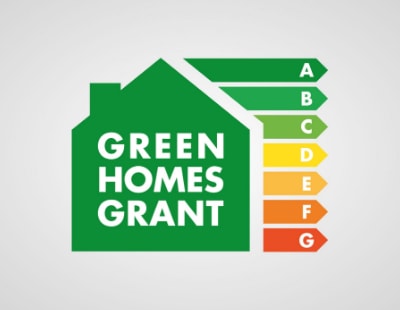The other major housing announcement in the Chancellor’s recent summer economic update, aside from the headline-grabbing stamp duty holiday, was the introduction of the £2 billion Green Homes Grant to improve the energy efficiency of Britain’s housing stock.
Set to be introduced from the end of September, the scheme could be used to help residential landlords and investors to improve the energy efficiency of their homes.
It’s currently a legal requirement for all rental properties to have a minimum Energy Performance Certificate (EPC) rating of E, with potential plans for this to be lowered to D or even C in the coming years.
Here, with the help of Matt Clemow, chief executive of challenger energy brand Igloo Energy, we reveal how landlords can take advantage of the Green Homes Grant.
How does the government’s Green Homes Grant work?
From late September, homeowners in England will be able to get up to £5,000 worth of vouchers (£10,000 for low-income households) to make energy-saving improvements so that their home is more energy-efficient and cheaper to run.
“It’s a win-win situation for the environment and your wallet,” Clemow says. “To access the Green Homes Grant, you’ll need to complete an online application form and get a quote from a listed supplier. Once your application has been approved, the government will give you your voucher and you’ll be able to start work.”
“Bear in mind, though, that for most of us, the grant won’t cover everything, and you will have to pay part of the costs. The voucher will normally pay for around two-thirds of the work, so expect to have to contribute a few thousand pounds. If you’re worried about the additional cost, check to see if you’re eligible to apply for more.”
What kind of things does it cover and who is eligible?
Clemow says the grant covers a wide number of improvements that can be made. The money can be used for insulation, including wall, under-floor and roof insulation, low-carbon heating technologies such as air source and ground source heat pumps, as well as solar thermal systems.
“Once you’ve received the initial voucher, you can apply for an additional one which will contribute to extra energy-efficient home improvements, such as double or triple glazing, energy-efficient doors, heating controls such as thermostats, insulation for your hot water tank and draft proofing,” he adds.
“Anyone who is a homeowner or landlord in England can apply as long as the property isn’t a recent new build. If you live in Wales, Scotland or Northern Ireland, there are other options available to help you make these improvements.”
What are the top tips for saving money on energy and making your property greener at the same time?
“It might seem obvious, but consider whether you are on the best energy deal as you could potentially save hundreds of pounds by switching provider. When looking at alternative providers, look beyond cheap introductory offers to consider whether a deal will offer long term savings,” Clemow claims.
“As we are getting closer to winter, it is time to start thinking about if you should make changes to how you control heating. A smart thermostat is a great way to make sure you only use energy when you need to heat your home without compromising on comfort.”
He says it may also be time to consider if now is the right time to change heating system altogether. “First up, if you are committed to keeping your current system, get a service before winter, that way your heating will work when you need it.”
To those thinking of getting a new boiler, Clemow advises considering switching away from a fossil fuel heating system to something like an Air Source Heat Pump.
“These can be up to four times more efficient at making useful heat and have an immediate reduction on your carbon footprint as they use electricity from the grid, which is on average 36% renewable,” Clemow concludes.
You can find out more about Igloo Energy here and read more about the Green Homes Grant on the gov.uk page here.









.png)










Join the conversation
Be the first to comment (please use the comment box below)
Please login to comment